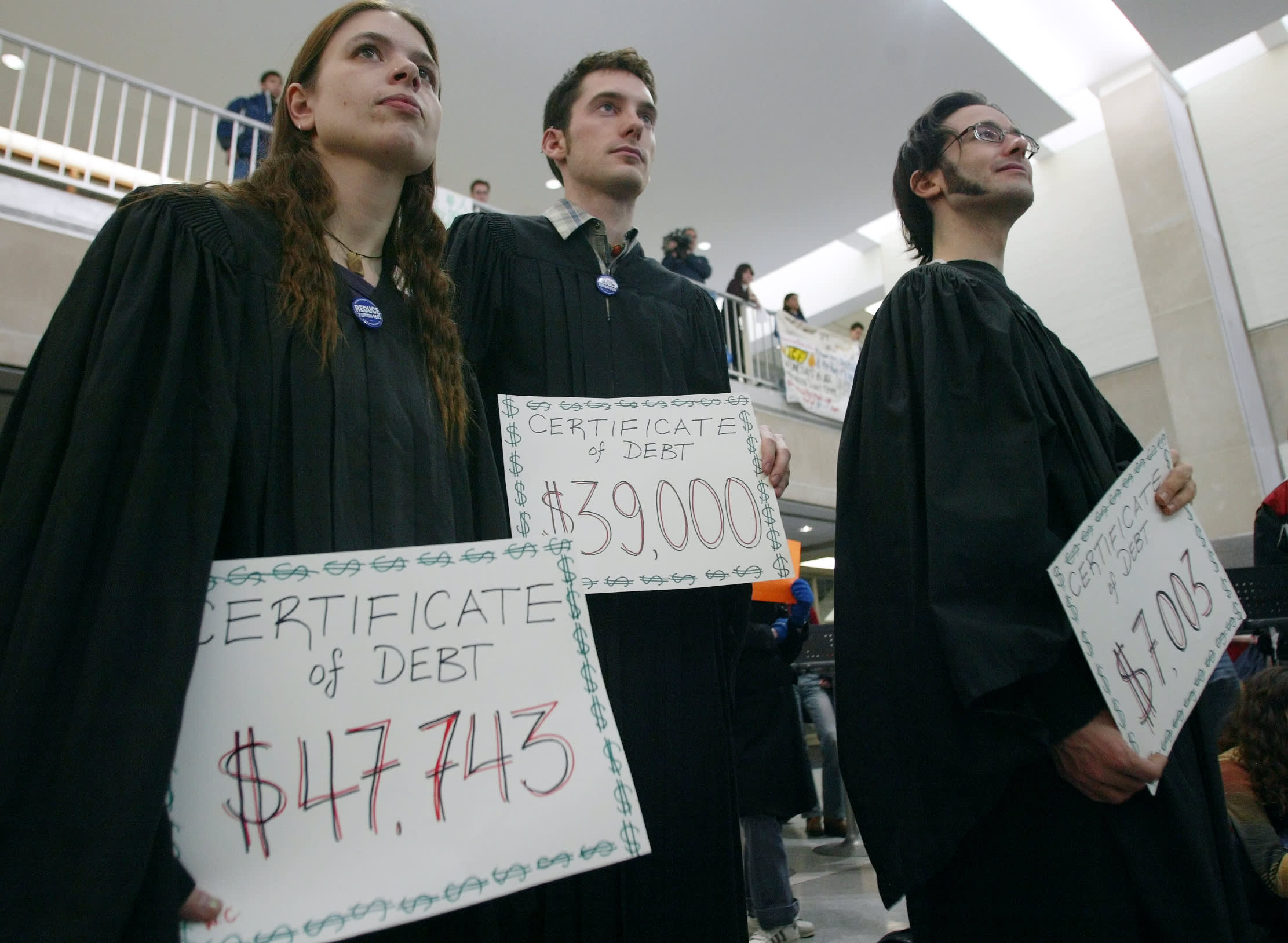Products You May Like
Federal student loan payments are currently set to resume in May after a pause that’s been extended for more than a year due to the coronavirus pandemic.
However, borrowers might not be ready to restart payments and could therefore fall behind on their loans, according to a recent blog post from the Federal Reserve Bank of St. Louis.
“Serious delinquency rates for student debt could snap back from historic lows to their previous highs in which 10% or more of the debt was past due,” wrote Lowell Ricketts, a data scientist for the Institute for Economic Equity at the bank and author of the blog post.
Resuming payments will affect many borrowers differently and place the most pressure on those with the heaviest burdens — often low-income workers and people of color, the blog post said.
More from Invest in You:
A four-day workweek doesn’t mean less work. Here’s how to do it
This company offers its contract workers benefits and job security
This worker took three months off with pay to hike in Europe
Among the class of 2016, the average student loan balance was $42,746 one year following graduation for Black students compared with $34,622 for white students, according to data from the National Center for Economic Statistics,” Ricketts wrote. “Therefore, the resumption of student loan repayments will raise the burden on Black students’ budgets more so than whites.”
Other student loan experts are worried that restarting payments could push up delinquencies as people have grown out of the habit of paying their loans and are now dealing with higher inflation that’s squeezing budgets.
“I think we’re going to have even higher delinquency and default rates than we did pre-pandemic,” said Betsy Mayotte, president of The Institute of Student Loan Advisors, a nonprofit.
What borrowers can do now
To be sure, the current pause on federal student loan payments and interest may not end in May. White House chief of staff Ron Klain said in a recent interview that the Biden administration is looking at the current situation with student loan debt and considering further extending the pause.
Still, borrowers should prepare for payments to restart sooner rather than later and use that time to rework their budgets and get in touch with their lenders. Here are four things all borrowers should do now, according to Mayotte.
- Make sure you know your loan servicer: A few major loan servicers have decided not to renew their contracts with the federal government, so some borrowers could have a different servicer than they did pre-pandemic, said Mayotte. If you’re not sure this applies to you, the easiest way to check is to log into your account at Studentaid.gov. This will tell you who is servicing your federal student loans.
- Open mail from your servicer and check your email: Many servicers have been sending reminder messages about payments resuming, which could be emails or letters, said Mayotte.
Borrowers should make sure they open all communications to ensure they don’t miss important information about payment deadlines or what they need to do if they want to switch payment plans, for example.
- Check what your payment is going to be: Closer to payments coming due, borrowers should make sure they know how much they need to pay to their loans each month, said Mayotte. And they need to make sure that payment fits their budget, as personal financial circumstances may have drastically changed since the start of the pandemic
For some, they may be able to pay more now than they were previously, which is a great way to ensure you’ll pay the least amount of money to your loans over time, said Mayotte. There’s never a penalty for paying more than you’re expected to monthly, she said.
- Adjust accordingly: On the flip side, some people may not be able to afford the same payments as before the pandemic. If so, borrowers should first see what their payment would be on an income-driven repayment plan. For many, it will lower their monthly amount owed and, in some cases, could even be zero. That’s usually a better option than deferring loans, putting them in forbearance or simply not paying, which will make you delinquent, said Mayotte.
If you do need to switch plans, you should send in the paperwork as soon as possible, said Mayotte. There are some 45 million student loan borrowers who will be entering repayment at the same time, which could overwhelm for the system.
“I’m expecting longer call wait times or a longer period of time for paperwork,” she said.
SIGN UP: Money 101 is an 8-week learning course to financial freedom, delivered weekly to your inbox. For the Spanish version Dinero 101, click here.
CHECK OUT: The ‘old convention’ for saving in retirement won’t work anymore, expert says: Here’s how to shift your strategy with Acorns+CNBC
Disclosure: NBCUniversal and Comcast Ventures are investors in Acorns.
